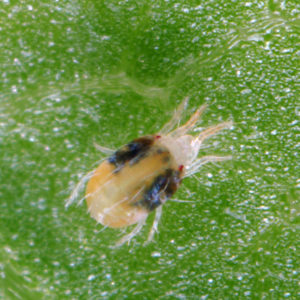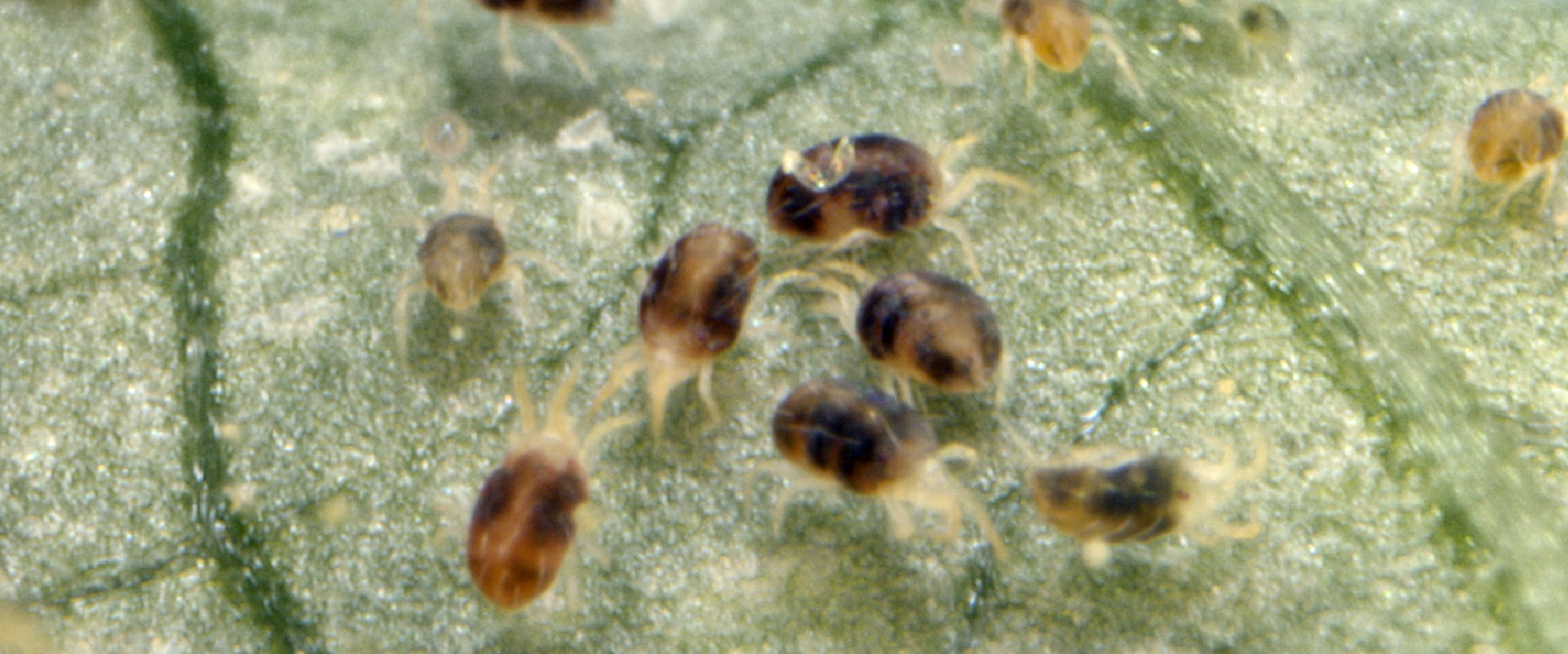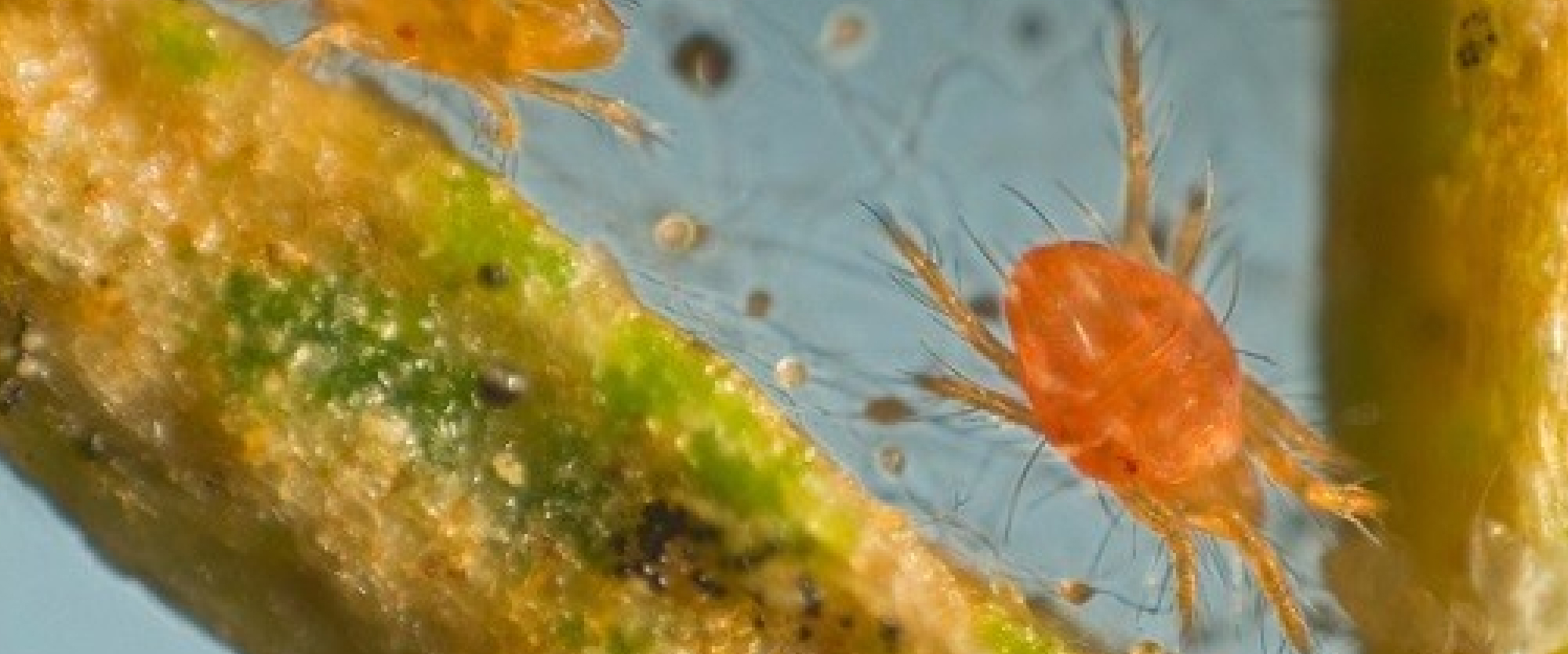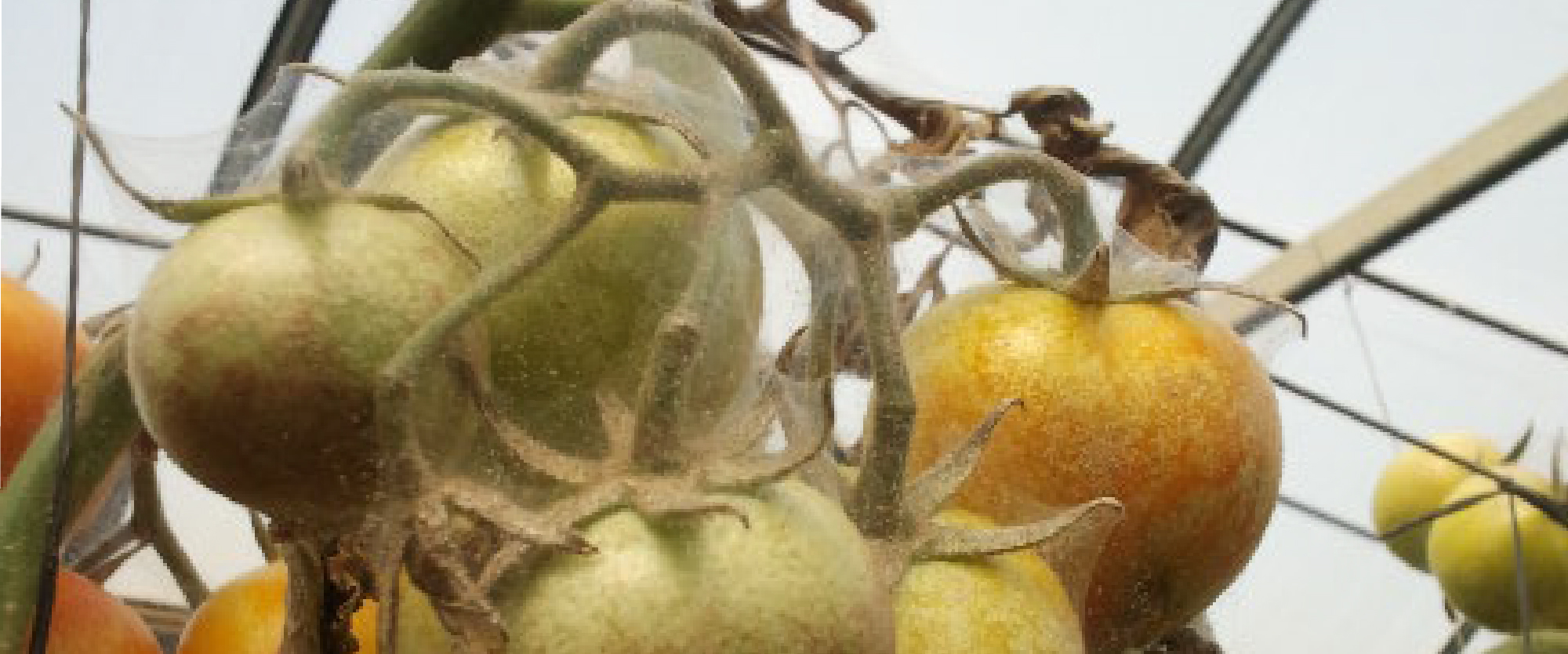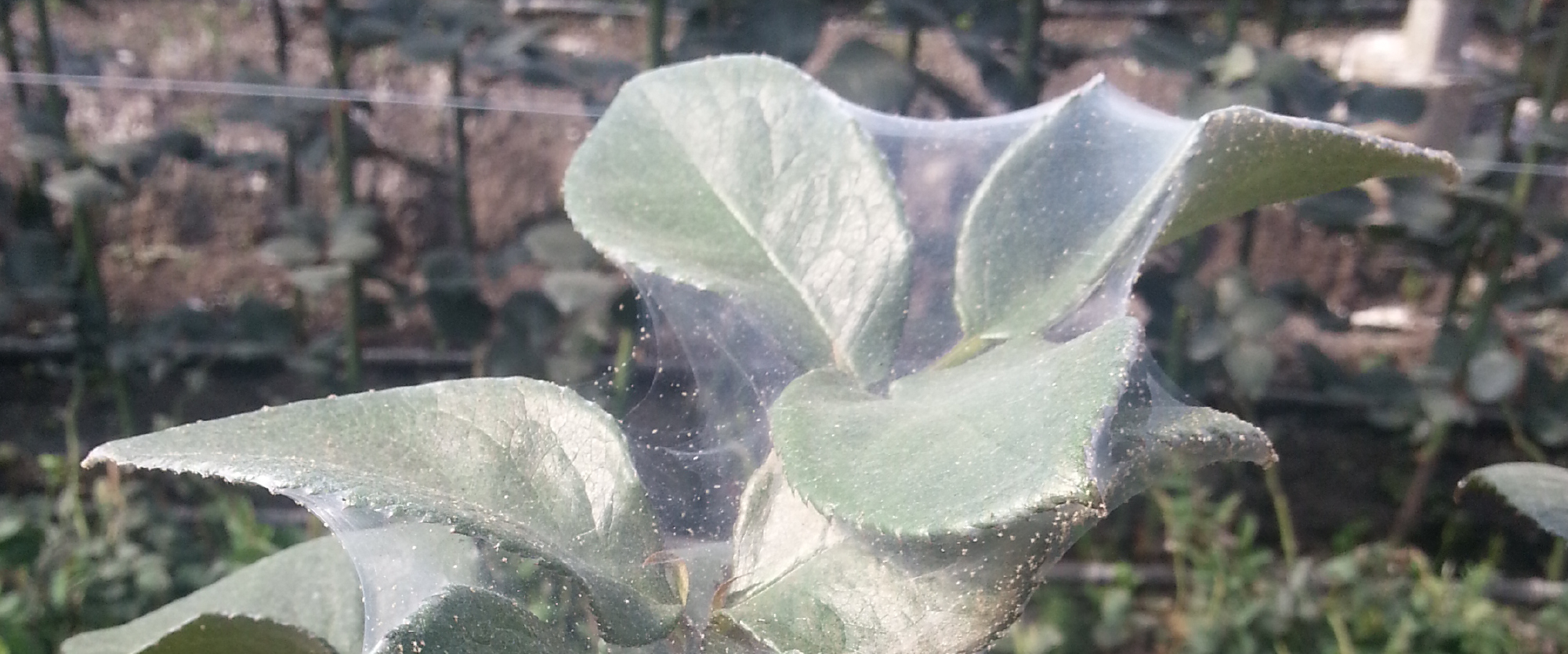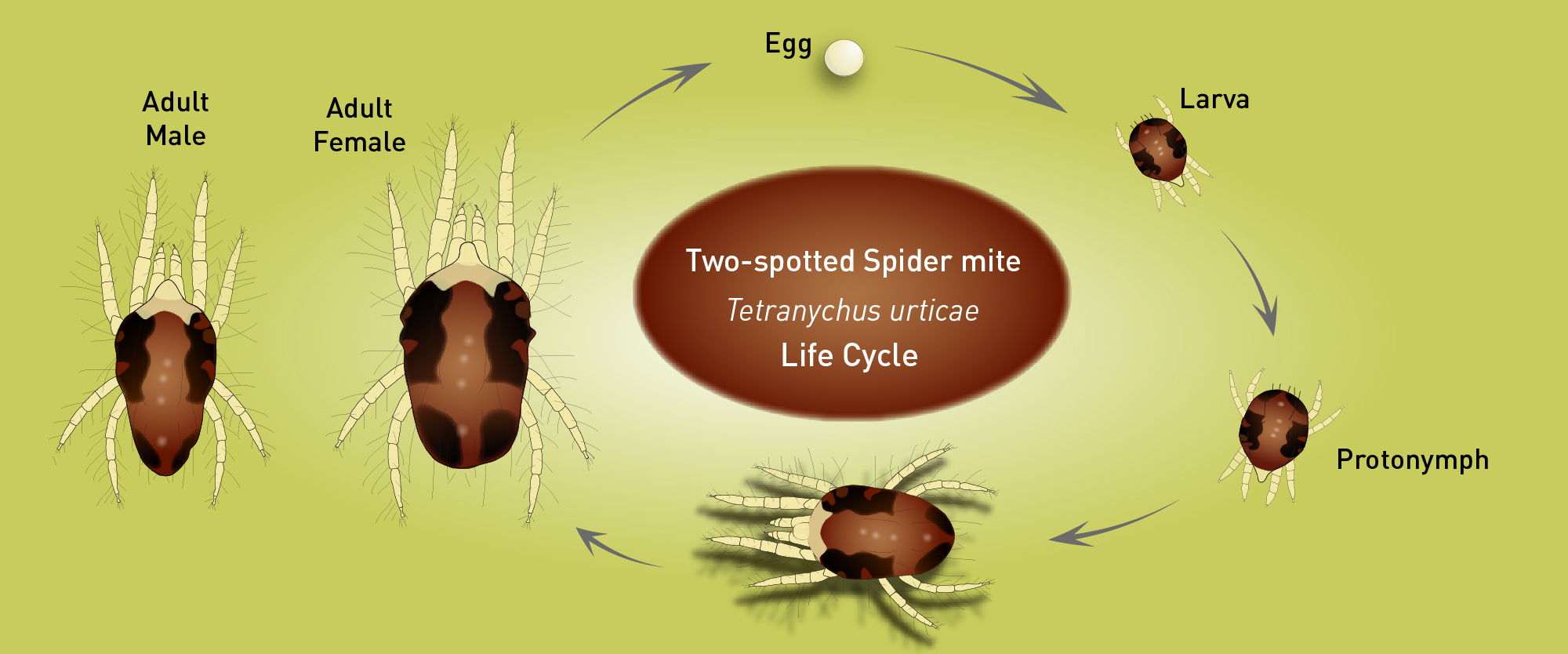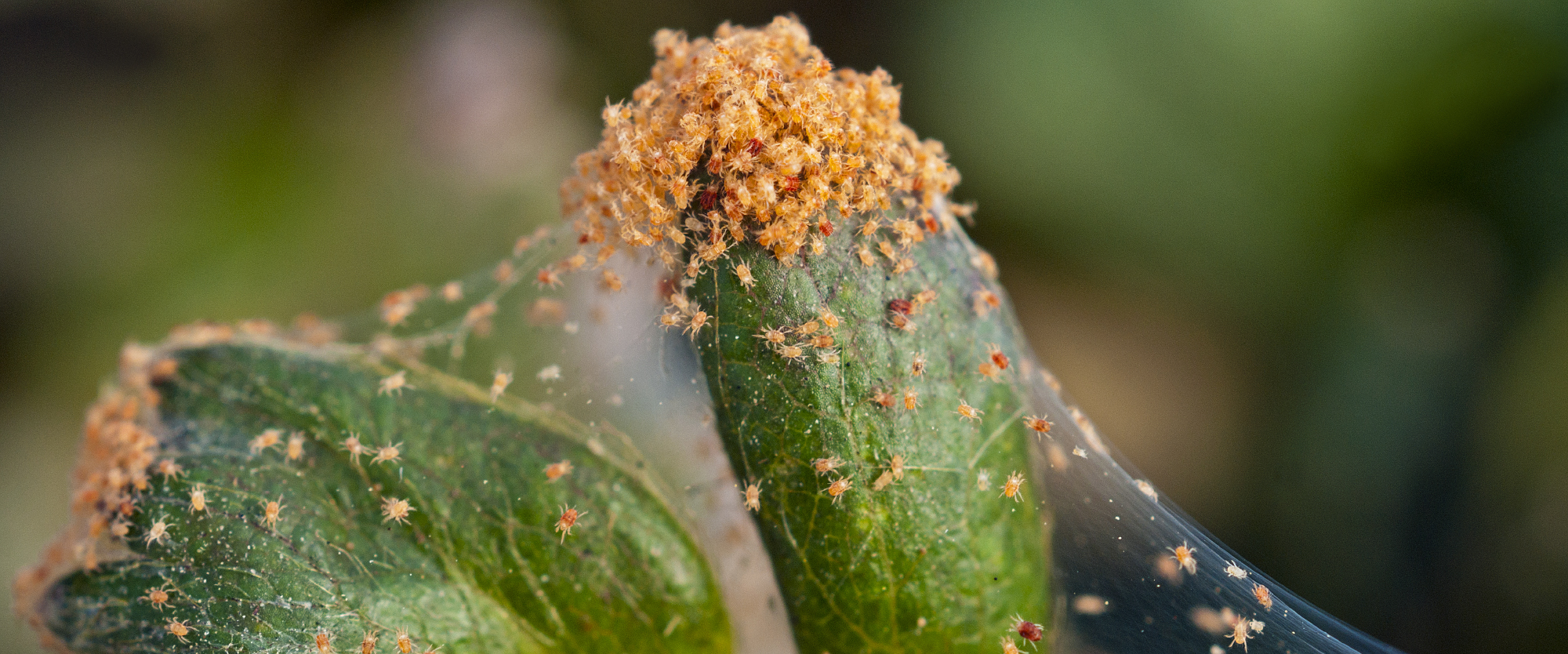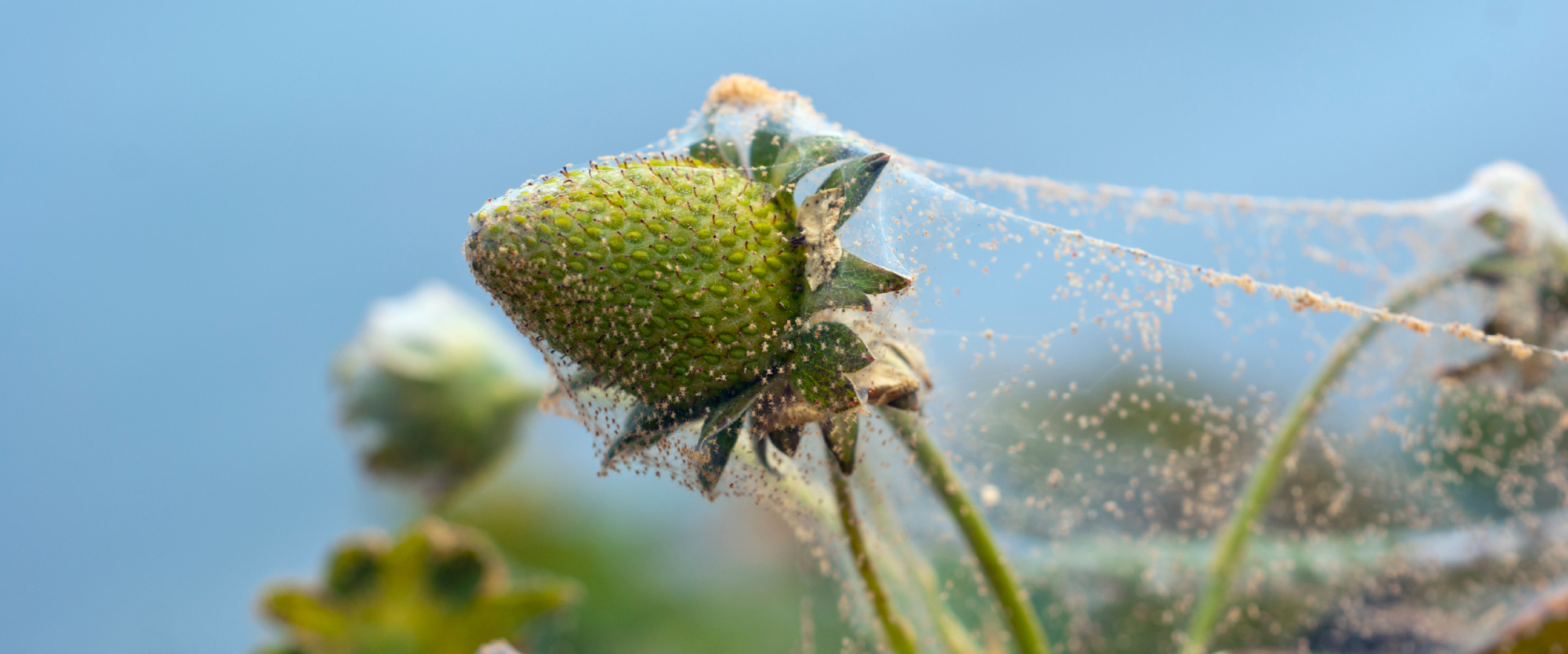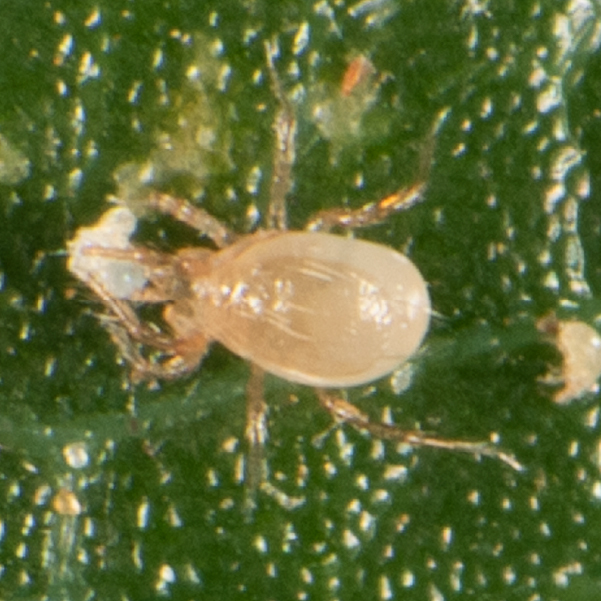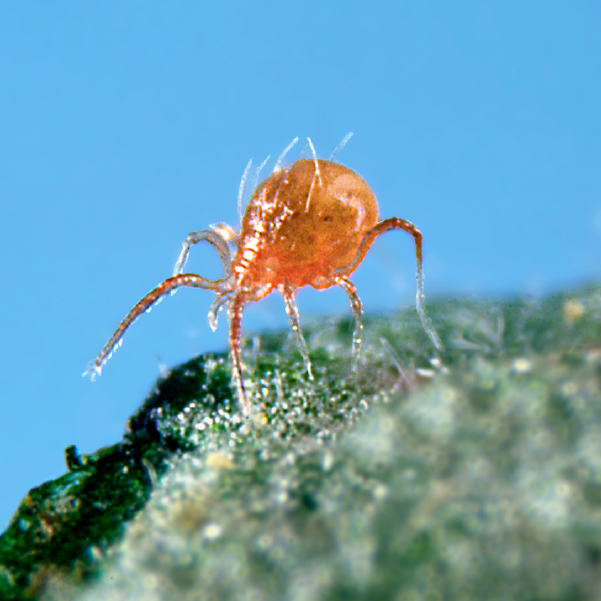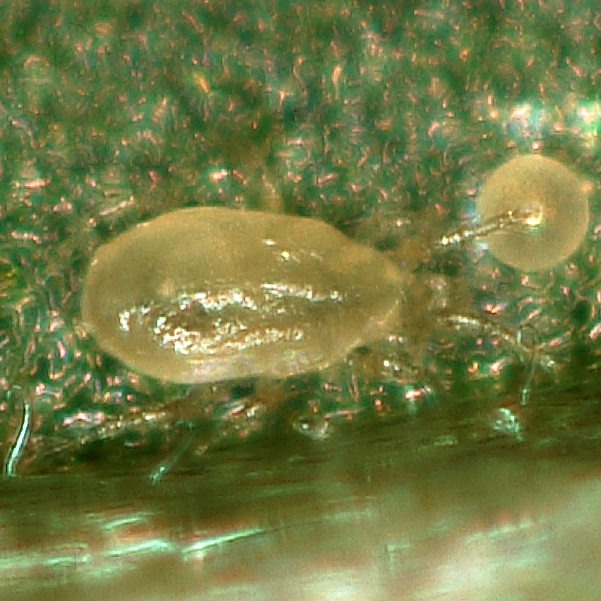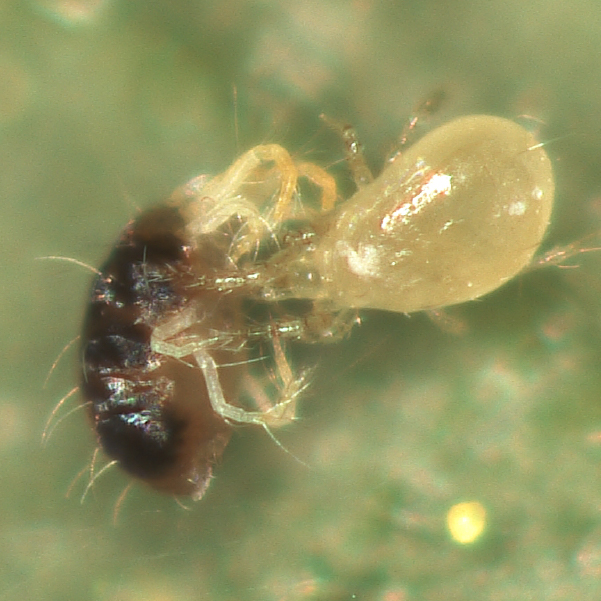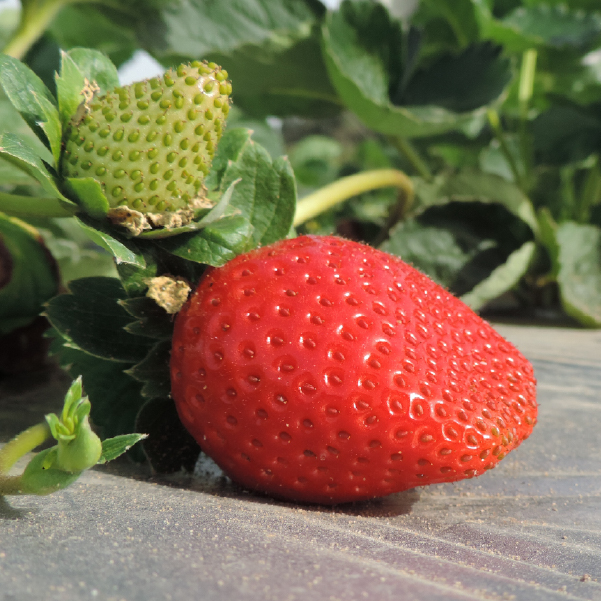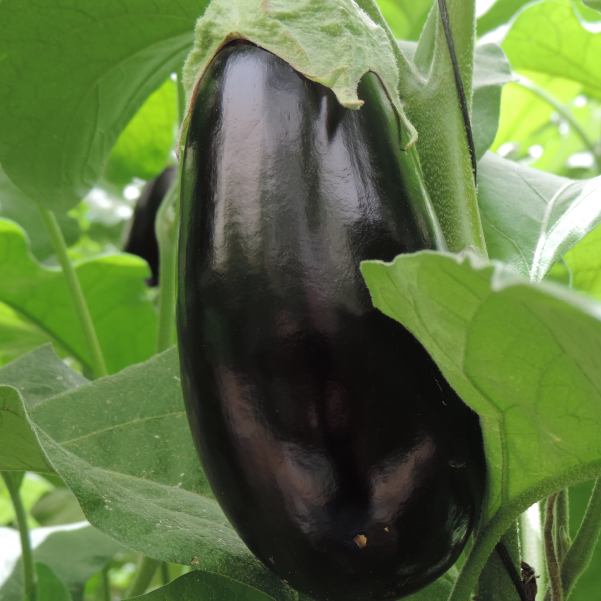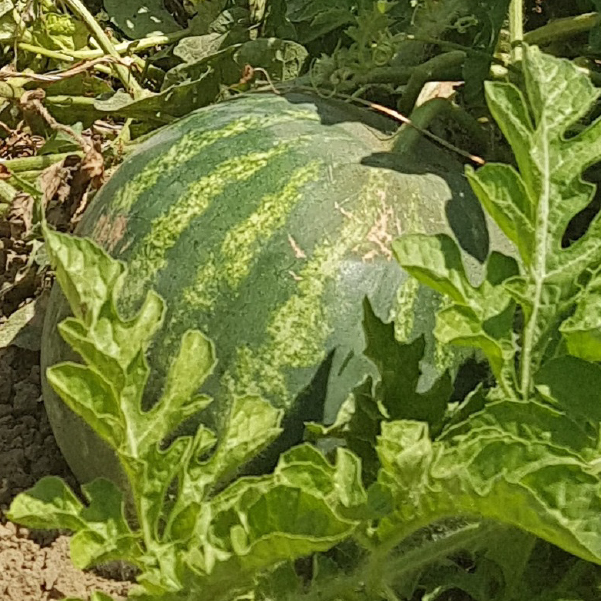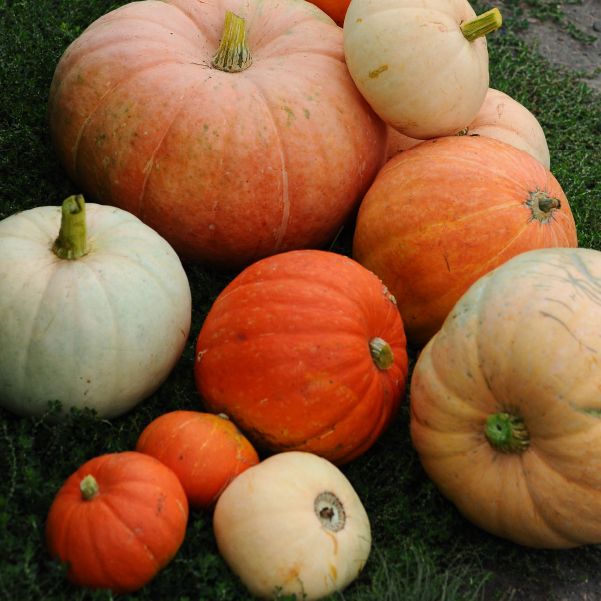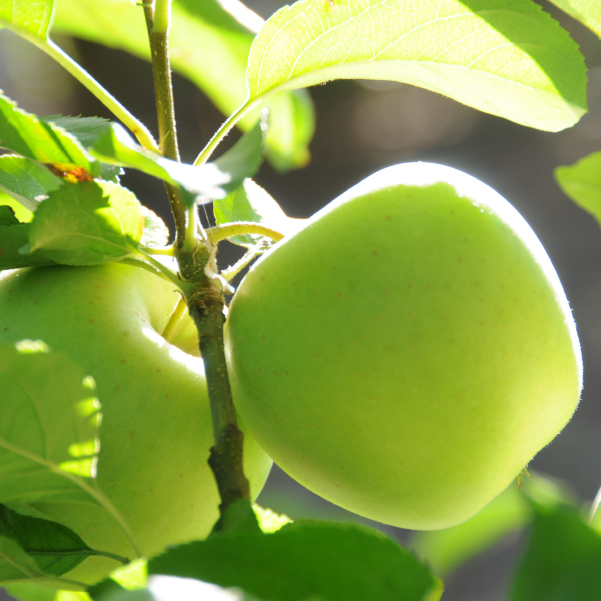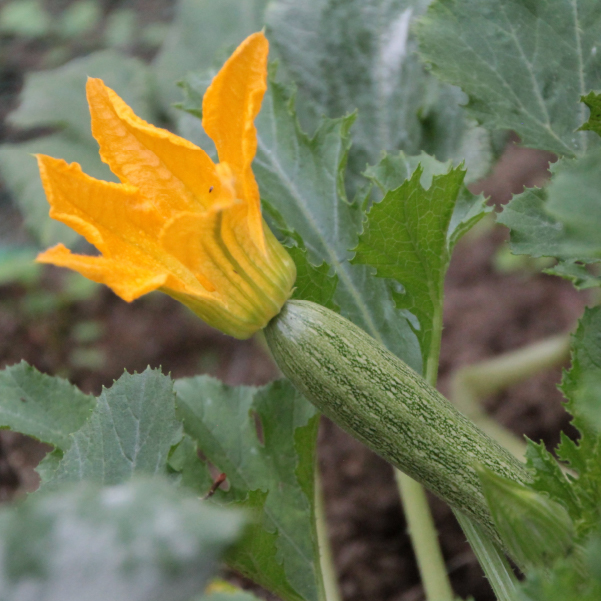Two-spotted spider mite (Tetranychus urticae) is oval and has two dark spots on either side of the body. This mite may be brown, orange-red or greenish-yellow in color. Two-spotted spider mite lays its eggs on the leaves. It attacks well over 100 species of cultivated crops and weeds and is a serious pest on peppers, tomatoes, strawberries, cucurbits and other vegetables, ornamentals, flowers and fruit trees.
Damage
The mobile stages (nymphs and adults) suck the cell contents from the leaves of the host plant cell by cell, leaving tiny, pale spots or scars where the green epidermal tissue is destroyed. Although the individual lesions are very small (commensurate with the small size of the mites) the frequently-observed attack of hundreds or thousands of spider mites may cause thousands of lesions and thus can significantly reduce the photosynthetic capability of plants, greatly reducing their production of nutrients, sometimes even killing the plants. Although this way of feeding could potentially spread plant viruses, this is considered of secondary importance in the case of spider mites. Initial infestations can develop into “hotspots”, which if left unchecked can rapidly spread to new areas. Greenhouse crops may suffer devastating damage from two-spotted spider mite.
There are specific natural enemies for different species of mites.
For more information contact your local BioBee field agent.
